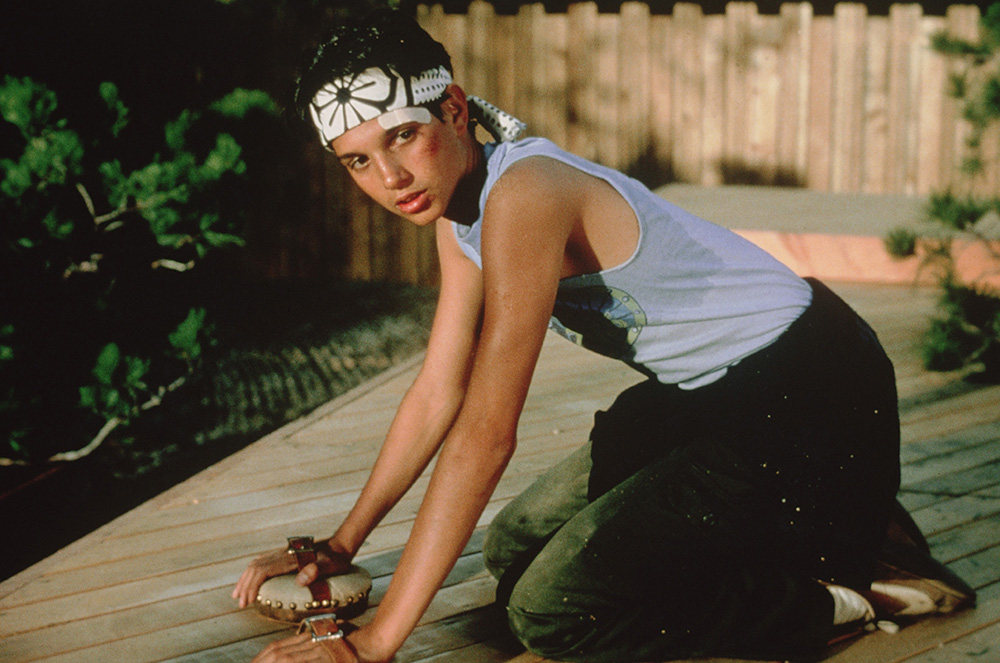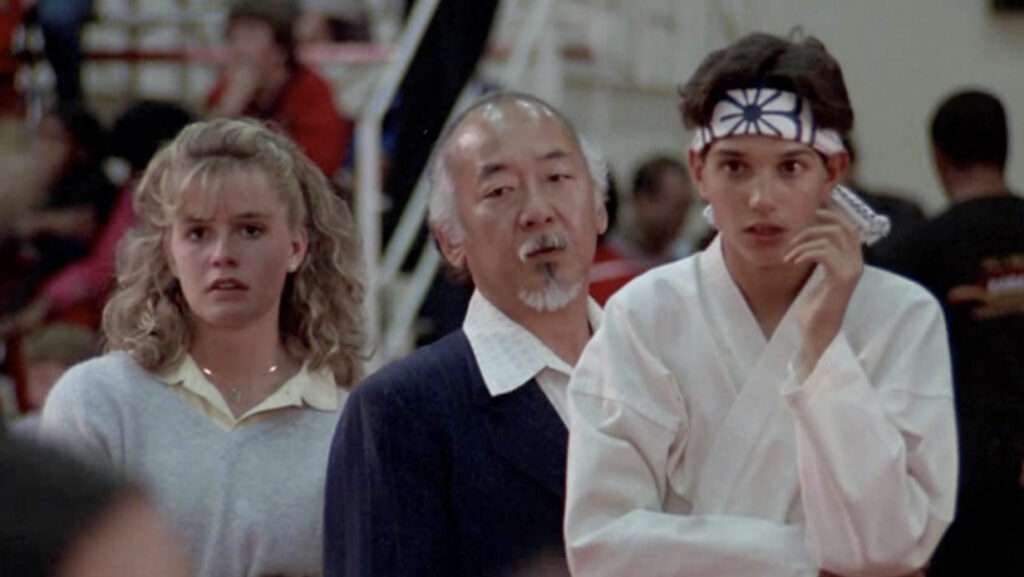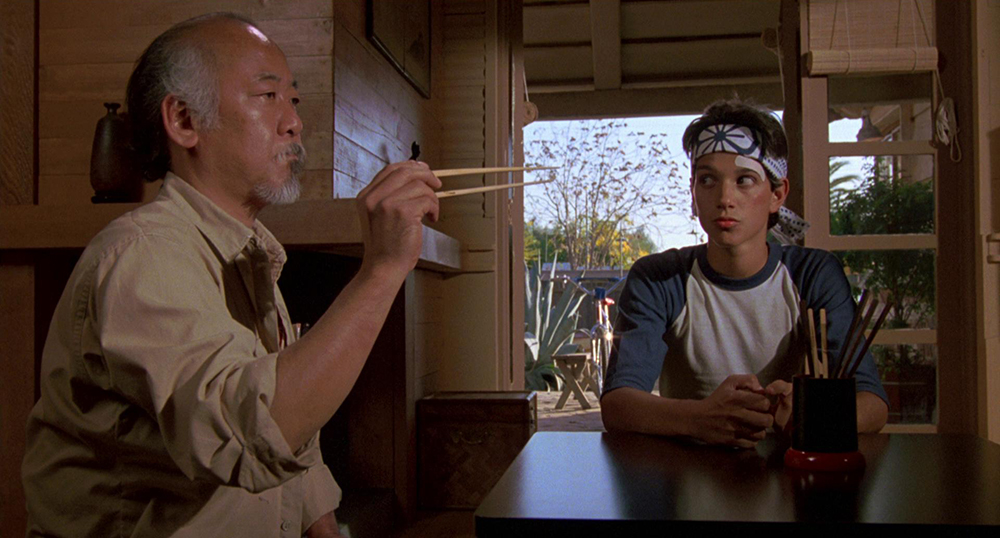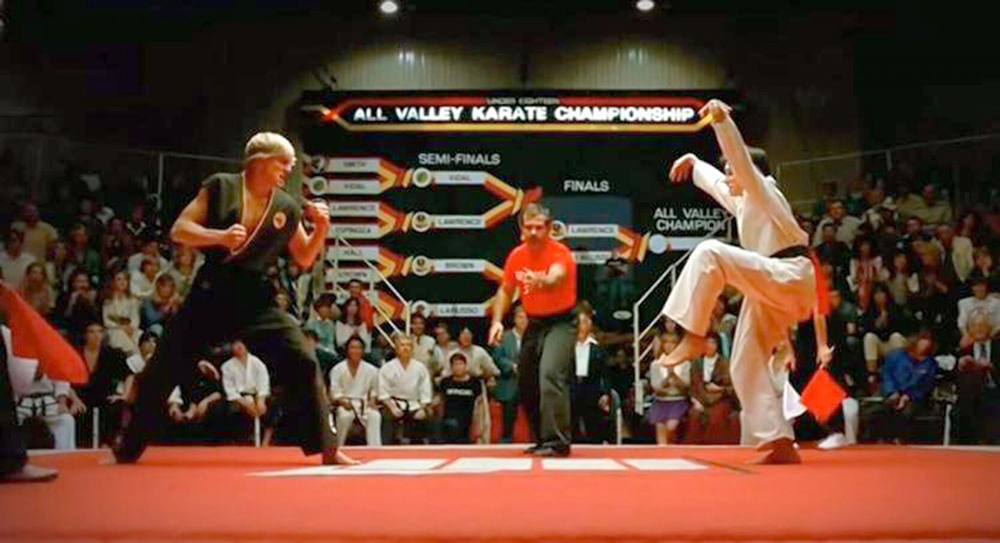While the 1980s were characterized by major martial arts feature films headlined by stars such as Jean-Claude Van Damme, Michael Joseph Stephen Dudikoff and Jackie Chan, few could have imagined back then that the sports and self-improvement tale The Karate Kid would become one of the most beloved and iconic films in the history of the Seventh Art.
Originally released in 1984, the Columbia Pictures production quickly established itself as one of the best action films of the 1980s and, over time, spawned three sequels: The Karate Kid Part II (1986), set in Okinawa, Japan; The Karate Kid Part III (1989), the fight against “karate bad boy” Mike Barnes; and The Next Karate Kid (1994), a revamped sequel starring Academy Award winner Hilary Swank.
Similarly, the sports franchise was also the subject of a fun animated series in 1989, a popular remake directed by filmmaker Harald Zwart in 2010, and most recently, a web series called Cobra Kai (2019 – present), in which Ralph Macchio and William Zabka reprise their original roles as eternal rivals.
If you need a brief recap, the original The Karate Kid film tells the coming-of-age story of witty, scrawny Daniel Larusso (Ralph Macchio) after moving from New Jersey to the suburbs of Los Angeles. There, he becomes the target of attacks from a hostile group of karate students when he begins dating Ali Mills, the former girlfriend of the group’s ringleader, Johnny Lawrence. Then, Mr. Miyagi (Noriyuki “Pat” Morita) enters the scene, an elderly war veteran and martial arts expert who becomes his mentor and helps him get his life back on track.
At the box office, The Karate Kid was an instant commercial success. In fact, it grossed more than ten times its original budget, which was estimated at $8 million. Another curious fact is that Roger Ebert himself gave it four out of four stars in his energetic and popular review (a quite significant achievement in the world of moviegoers).
On the 40th anniversary of its release, here are 4 reasons why The Karate Kid is still punching and kicking so many years after its release date. Looking back, it’s pretty clear to us that the feature film has aged well and remains funny, sobering and heartwarming.
1. An Inspiring Story

Directed by John G. Avildsen and written by Robert Mark Kamen, The Karate Kid is the classic story of an underdog who, against all odds, manages to triumph over overwhelming adversity. Like the “Italian Stallion” Rocky Balboa, this film reminds us that beyond background, personal demons and calamities, anyone can conquer a better future.
In essence, The Karate Kid follows the adventure of Daniel La Russo the new kid in town, struggling to find his place in the world. In this regard, the Jersey boy’s journey of self-improvement – from a fearful underdog with a thirst for revenge to a formidable and respected Karate champion – is an inspiring story of self-discovery, evolution and maturity.
While the sports film has clichés and predictable tropes, viewers can identify with the universal experience of facing adversity, finding enough strength to overcome it, and achieving a better version of ourselves.
Forty years after its release, The Karate Kid remains a source of inspiration for people of all ages. With its “mentor and underdog” story, and its ability to explore timeless themes of: inner strength, perseverance, mentorship, intergenerational friendship and the triumph of the human spirit, the film remains relevant and meaningful.
2. Captivating and compelling characters

While The Karate Kid may be a simple plot about a vulnerable teenager and his quirky, bonsai-loving sensei, there are a number of captivating and compelling characters in this wonderful story that grab the audience from the very first moment.
Robert Mark Kamen, the writer of the production, managed to strike a chord with audiences and critics alike as he endowed his protagonists with inherent layers and emotional ties that anyone can easily connect with; as for the secondary characters, most of them present distinguishable characteristics that help add color, texture and depth to the plot.
That said, throughout the feature we become involved and interested in: Daniel LaRusso (Ralph Macchio), the bullied student who undergoes a transformative journey under Mr. Miyagi’s guidance; Ali Mills (Elisabeth Shue), the kind and popular high school cheerleader; Johnny Lawrence (William Zabka), the scorned and discolored villain who bullies the protagonist; John Kreese (Martin Kove), the fearsome militarized sensei, who encourages violence with the motto: “Strike First, Strike Hard, No Mercy”; and Mr. Miyagi (Noriyuki “Pat” Morita), Daniel’s wise and enigmatic karate master, who imparts his knowledge in unusual ways.
Undoubtedly, the endurance of this feature film has depended largely on its endearing characters, played by a sympathetic and committed cast.
3. Miyagi as mentor and father figure

The Karate Kid feature film would never have been the same without the iconic figure of Mr. Miyagi, the tenacious and compassionate Japanese janitor who soon becomes Daniel LaRusso’s martial arts master, mentor and father figure.
Brilliantly played by Noriyuki “Pat” Morita, the character of Mr. Miyagi may be one of the most cherished mentors in cinema and a great example of the lasting impact of good tutoring in the life of any young apprentice. In this regard, the film firmly states, “No Such Thing as Bad Student, Only Bad Teacher. Teacher Say, Student Do.”
Overall, The Karate Kid has been enormously popular not only because we identify with the witty and hapless protagonist, but also because the story involves us in a refreshing “teacher-apprentice” or “mentor-underdog” relationship that is genuinely sobering and insightful.
Under Mr. Miyagi’s mentorship, Daniel LaRusso not only develops his fighting skills, but also learns invaluable lessons about friendship, discipline, balance, inner peace and honor. It is through Mr. Miyagi’s unorthodox training style, based on repetitive and seemingly mundane household chores, such as “Wax On, Wax Off,” that Daniel is eventually able to face his fears and opponents.
Advisor, friend, mentor, and staunch supporter, Mr. Miyagi conceived by “Pat” Morita has left an indelible mark on the hearts of the public.
4. A good dose of action

The Karate Kid is undeniably one of the best martial arts films of the 1980s, due, among other things, to its thrilling training and fight scenes.
Considered one of Columbia Pictures’ biggest surprises, John G. Avildsen’s project has one of the most original and out-of-the-box training cycles in the history of cinema. Throughout the film, we see Daniel struggle with a challenging learning curve, ranging from the famous “waxing” routine to Crane’s mythical kick.
Although the film is full of neither confrontations nor bloody fights, there is a good dose of action, excellently choreographed and shot, which immediately engages the audience.
Overall, the showdown at the All Valley Karate Tournament is one of the best fight sequences in the entire film. Finally, the audience sees young Daniel LaRusso put all of his training to the test. From start to finish, the editing is precisely paced, dynamic and engaging. In addition, these action scenes are accompanied by one of the best songs in the entire franchise, You’re the Best Around by Joe Esposito.
Toast the 40th anniversary of Karate Kid
There are certain feature films that transcend their genre and era for their valuable legacy. Such is the case with The Karate Kid, a martial arts drama that has carved a permanent place in film history.
What distinguishes The Karate Kid from other martial arts films is that it is not just about the fights, but has the portentous ability to combine action, humor, adventure and a lot of heart. This sports story defends time and again the idea of pacifist and cultured karate, which contributes to self-improvement.

